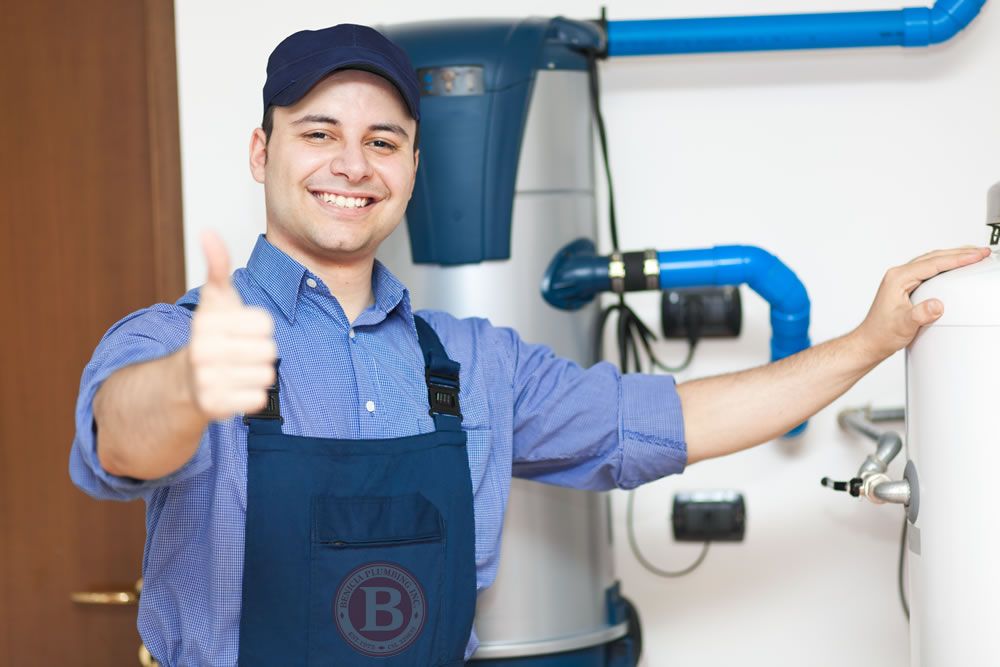A Step-by-Step Guide to Reliable Hot Water Heater Installation for Optimum Performance
Embarking on the job of mounting a water heater is a venture that demands accuracy and a systematic approach for achieving optimal performance. The procedure starts with the important choice of choosing the suitable heating unit tailored to the certain needs of your household, considering factors such as size, type, and energy source. When chosen, preparing the setup area to fulfill security requirements is extremely important. The trip does not end right here. As you proceed, the details of connecting water lines and establishing reliable electric or gas connections await, promising understandings right into making sure efficiency and reliability.
Choosing the Right Hot Water Heater

Following, take into consideration the size and ability of the hot water heater. It's essential to evaluate your home's warm water demands, which can vary based upon the number of residents and their use patterns. A device that's also tiny might lead to inadequate warm water, while an oversized version could result in unneeded energy usage.
Effectiveness ratings also play a crucial role in selection. Try to find hot water heater with high Power Factor (EF) rankings, suggesting superior performance and reduced energy usage. Tankless versions, though commonly a lot more expensive upfront, deal substantial power savings with time due to their on-demand heating capabilities.
Preparing the Setup Area
Prior to mounting a brand-new water heating system, precise preparation of the setup location is essential. This makes certain a smooth setup process and helps avoid future difficulties (Plumber Alabaster AL). Begin by choosing a proper location that adheres to regional building ordinance and safety requirements. The area should be completely dry, well-ventilated, and available for maintenance. It's critical to measure the space meticulously to accommodate the hot water heater's measurements, ensuring appropriate clearance around the system for reliable operation and maintenance.
Following, get rid of any type of particles, dust, or blockages from the site to produce a tidy atmosphere. Examine the flooring for security, as the hot water heater will certainly need a strong, level surface area to run successfully. If required, set up a drip pan below the device to catch potential leaks or spills, preventing water damages to the surrounding area. In areas susceptible to seismic activity, take into consideration setting up seismic straps to safeguard the heating unit securely in position.
Additionally, make sure that all necessary devices and materials are on hand before commencing the installation. This consists of things such as wrenches, screwdrivers, a level, and any type of added hardware my explanation required for mounting and securing the heater. A well-prepared setup location sets the structure for an effective water heating unit setup, optimizing performance and security.
Connecting Water System Lines
When linking water lines to your freshly installed hot water heater, it is essential to make certain that all links are secure and leak-free to preserve effective operation and prevent water damages. Begin by determining the cold and hot water system lines. The cold water inlet is typically noted with a blue tag or a "C", while the warm water outlet is marked with a red tag or an "H".
Usage versatile water heating unit connectors to help with an easier installment procedure. Prior to affixing the adapters, put a plumber's tape around the threaded ends of the water heating system's inlet and outlet pipelines.
Once connections are in area, gradually activate the primary supply of water valve. Check each connection for leakages by visually examining and really feeling for wetness. Tighten up connections as necessary, and make sure the stress safety valve is correctly mounted, securing versus too much pressure build-up.
Setting Up Electric or Gas Connections
Properly setting up the electric or gas connections for your water heating system is a crucial step to make sure safe and effective procedure. For electrical water heaters, begin by confirming that the electric circuit is compatible with the heater's voltage and amperage requirements.
For gas water heating units, safety is critical. Connect the gas line to the water heating system making use of a flexible gas connector, ensuring read the article it is properly threaded and sealed with pipe joint substance or Teflon tape appropriate for gas connections.
When links are made, check for any potential leakages. For gas lines, use a soapy water service to the joints; bubbles suggest a leak. For electric links, confirm that all wiring is safe and properly protected, maintaining conformity with neighborhood electrical codes.
Changing and checking for Effectiveness
With the electrical and gas connections securely in area, the next step is examining the functional efficiency of your water heating system. Begin by thoroughly turning on the water supply and making certain there are no leaks at any of the valves or joints.
Next, do a detailed inspection to make certain the home heating components or burner are functioning correctly. For electric heaters, utilize a multimeter to validate if the components are drawing the proper present. In gas Recommended Site versions, observe the burner fire; it ought to be steady and blue, indicating effective burning.
Change the setups as needed to remove inefficiencies. Consider applying insulation measures, such as adding a water heating system covering, to further improve performance by minimizing warmth loss. In addition, check the anode rod's condition, as a tatty pole can decrease effectiveness and cause container corrosion.
Conclusion
Effective water heating unit setup is crucial for ensuring optimal performance and power cost savings. Safely connecting water supply lines and meticulously establishing up electric or gas connections lessen possible concerns.

Appropriately establishing up the electrical or gas connections for your water heating unit is an important step to guarantee efficient and risk-free operation. For electrical water heating systems, start by verifying that the electric circuit is compatible with the heating system's voltage and amperage needs. Attach the gas line to the water heating unit using an adaptable gas adapter, guaranteeing it is properly threaded and sealed with pipe joint compound or Teflon tape ideal for gas links.